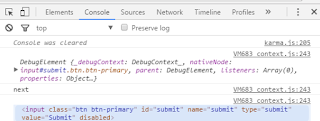To make it easier, rest and spread operator basically helps to merge all your function parameter together. In the past, we use something like myfunction.apply(null, myAgumentList) With rest and spread we can easily function log(...a) { console.log(a); } log(1,2,3,4,5); // outputs [1, 2, 3, 4, 5] array Notice we're assigning myArguments at the back. let myArguments = ['x', 'y', 3] log(1,2, myArguments); // outputs [1, 2, ['x', 'y', 3]] 2 different array log(1,2, ...myArguments); // outputs [1, 2, 'x', 'y', 3] 1 array Notice we're assigning myArguments at the front. log(...myArguments,1,2 ); // outputs [ 'x', 'y', 3, 1, 2] essentially a single array.


